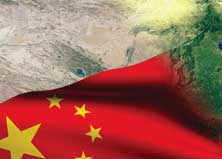Country Focus: China: restarting the economy with one strategy at a time
On its way to full economic recovery, after the onslaught of the pandemic, China is forming new plans and policies to boost its economy and cater to the global market, says Angelica Buan in this report.
Brimming with confidence
The Covid-19 virus has afflicted more than millions globally, with the world GDP sliding down by 0.5% in 2020, according to the Organisation for Economic Co-operation and Development (OECD).
Even China, as the world’s largest consumer market and manufacturing powerhouse, was not spared. Understandably, China’s policy moves to resuscitate its economy have never been as crucial as now for the starting up of world economies. China is said to be the only major economy to score positive growth in 2020. According to the country’s National Bureau of Statistics (NBS), in January 2020, China’s economy grew by 2.3%, with gross national income crossing RMB101 trillion, up by 1.9% over the previous year.
In 2021, and even though the emergence of new virus variants and fresh cases of infections are prolonging recovery in most countries, China is strategically elbowing its way to recovery. In fact, economic activities have started picking up, businesses have reopened and people have started buying. From January-February 2021, total retail sales of social consumer goods reached over RMB6.97 trillion, an increase of 33.8% compared to last year, according to NBS.
Drive for strong domestic market, global trade

This year, China is also setting a conservative economic growth goal of 6%, slightly lower than the previous 6.5%-7% projections and much lower than the 8% projection by the International Monetary Fund (IMF) and the United Nation’s Conference on Trade and Development (UNCTAD).
In early March, during the annual National People’s Congress in Beijing, Chinese Premier Lu Keqiang said the growth will hinge on the success of the recently approved 14th five-year plan (2021-2025) and the long-range objectives through to 2035.
The 14th FYP focuses on sustainable economic growth, an innovation-driven industrial system and rural area development. It will also build upon the goals outlined in the previous 13th FYP that highlighted centrepiece programmes such as the large scale infrastructure projects within the Belt and Road Initiative; Made in China 2025, which aims to make China technologically competitive; Internet Plus, which taps its nearly 1 billion-strong domestic internet market; and a line-up of social, financial and green development strategies.

During this period, China will gear up its dual circulation strategy, which means pivoting to its domestic market and at the same time boosting its export markets. The pandemic has tested the vulnerabilities of the global supply chain and this strategy will allow China to harness its vast market asset to expand and grow. It is also going to invigorate its local demand and production, and its technological capabilities.
Rebooting the manufacturing sector: a bane to the plastics sector
China’s manufacturing sector, investments and exports sustained the country’s consumer market, contributing to its recovery following the pandemic, according to a report by KPMG China released in February.

As such, China has set its sights on modernising its manufacturing sector, which the World Bank says accounts for 27% of the economy, by transforming it into a more innovation and technology-driven one. It will harness the 5G network, industrial internet-of-things, big data analytics and other connectivity infrastructure in the main frame of this strategy.
A thriving manufacturing sector augurs well for the plastics and rubber industries to oil the economy.
The China Machinery Industry Federation (CMIF) reported a strong performance of the machinery industry in 2020, with sales and profits surpassing targets. Manufacture of machinery equipment demonstrated profitable growth at the onset of 2021, rising by 6.6% and accounting for 34% of all industrial enterprises, according to NBS.
Plastics machinery takes a slide
However, the plastics machinery industry witnessed a decline in 2020, according to the China Plastics Machinery Industry Association (CPMIA). The total production output of 488 plastics machinery companies was 333,689 units, a decline of 5% over the previous year. On the other hand, profit was RMB8.57 billion, up by 49%.
The value of plastics machinery trade has fluctuated, but has generally shown positive outcomes. Total import/export of plastics machinery was valued at US$4.6 billion, up by 0.86%. China also incurred, for the first time, an over US$1 billion worth trade surplus of plastics machinery.
Meanwhile, imports of injection moulding machines dropped by 11%; while exports increased by 4% from January-December last year. Imports of extruders grew by 24%, whilst exports fell by 14%. The import value of plastic pelletisers rose by 24%, whereas the exports fell by 32%, while imports of blow moulding machines slipped by nearly half but export values increased by 11%.
Read more...
(PRA) Subscribe to Get the Latest Updates from PRA Please click here
©2021 Plastics and Rubber Asia. All rights reserved.

©2020 Plastics and Rubber Asia. All rights reserved.
Home Terms & Conditions Privacy Policy Webmail Site Map About Us













